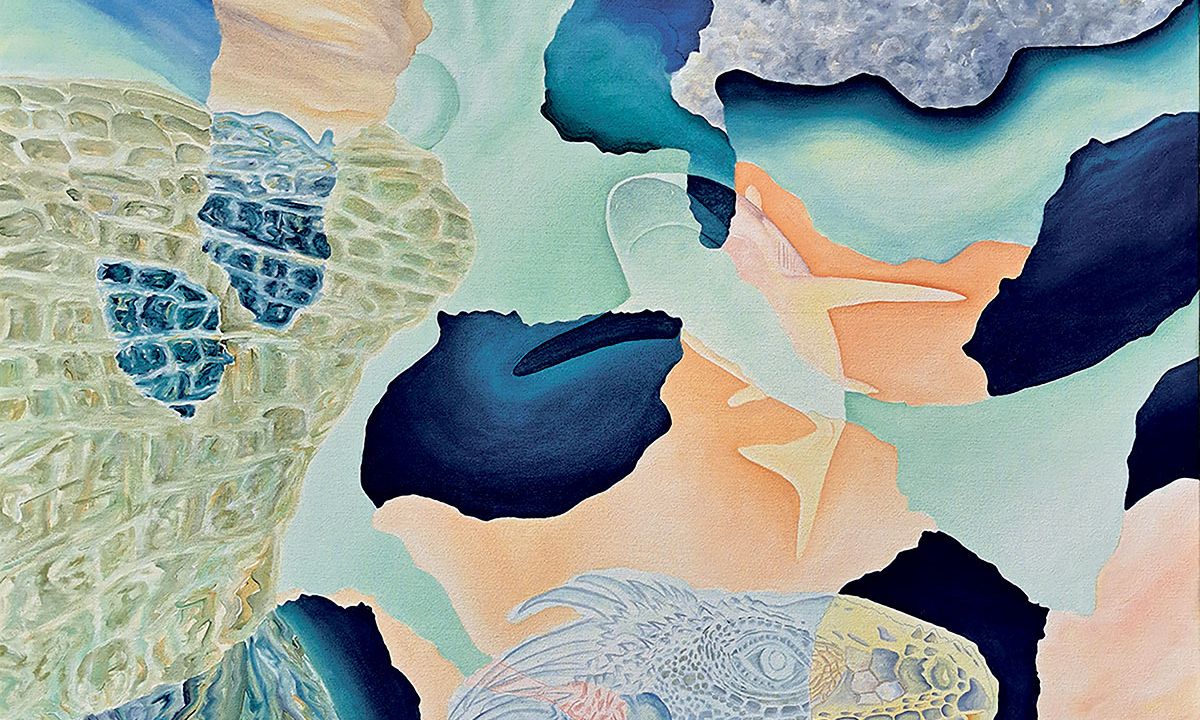Unbridled Lull (2023) by the Ghanaian artist Kwadwo A. Asiedu’s is on kó’s stand at 1-54. The Lagos gallery has returned for this year’s edition following its success in 2023.
Courtesy of the artist and kó
For its tenth year in New York, 1-54 Contemporary African Art Fair (until 4 May) is larger than ever and in a new, more central location. Touria El Glaoui, the fair’s founder and director, says this puts it in prime position to capitalise on this week’s art events in the city, as the market for African art remains steadfast despite a softening in other parts of the industry. Named for the 54 countries in Africa, the fair is centred on artists both from the continent and its diaspora. It is the leading fair for contemporary art of its kind.
The decision to move 1-54 to Chelsea came after feedback from exhibitors, who said it would be useful to be closer to the other fairs running concurrently, El Glaoui says. The fair’s new venue, the Starrett-Lehigh Building, is a familiar space in the New York art world and less than a ten-minute walk from The Shed—home of Frieze New York. Future Fair is also just blocks away.
“We really were keen to find a location that was in the middle of the city, in the middle of the art world, and Chelsea is a place full of galleries that are also doing our art fairs,” El Glaoui says. “It just made sense.” (Last year’s fair was held at a warehouse in Harlem, which previously housed the gallery Gavin Brown’s enterprise before it closed in 2020.)
Amasaka Gallery's stand at 1-54 Photo by Steven Molina Contreras
With 32 stands, it is the largest New York iteration of the fair since 1-54 was first held here in 2015. Eight galleries are taking part in the fair for the first time, according to El Glaoui. One of these is Amasaka Gallery, with spaces in Kampala (the capital of Uganda) and Masaka (a city about two hours southwest) dedicated to showcasing work by emerging artists.
“Uganda has its issues, just like any other country, but I think it also has a lot of talent that is not represented,” says Collin Sekajugo, the gallery’s founder. “One of the reasons I opened the gallery four years ago was to create an alternative space that would elevate this creativity to the international stage.”
Access for female artists
The gallery’s stand at 1-54 features work by Christine Nyatho, Olivia Mary Nantongo and Nabir Yo—all women artists from Uganda. “The art industry, especially in Uganda, is male dominated,” Sekajugo says. “Female artists need more exposure and access to more opportunities. This is the first time that we’re showcasing in 1-54, and we thought these artists would fit in so well, especially at a time when we’re trying to promote equality in Uganda.”
One of 1-54’s returning galleries is Lagos’s kó, with a stand dedicated to painting and ceramics by the Ghanaian artist Kwadwo A. Asiedu, Nigerian artists Tofo Bardi and Ngozi-Omeje Ezema, and Bisila Noha from Spain. “We did very well last year, and we hope to replicate the success of our sales,” says kó director Joseph Gergel. “We just participated in 1-54 Marrakech in February as well, and did very well there. What’s nice about 1-54 is that it’s small, it’s more intimate. It gives us an opportunity to bring an emerging artist in and test the market.”
The stand of Lagos’s kó gallery at 1-54 Photo by Steven Molina Contreras
The 32 galleries taking part in the fair this year hail from all over Africa, Europe and the US. Although only seven of them are based in Africa, El Glaoui says that this is a relatively strong ratio for the New York edition.
“We try to be sensitive about it to make sure that we have a representation of African galleries,” she says. “We’re very aware, in the selection committee, of encouraging galleries from the continent to participate.” Unfortunately, the US is an expensive and difficult country for many African galleries to get to, especially considering the process of acquiring visas and shipping works. “We have a larger number committing to the fair in London or Marrakech because of logistics and costs,” El Glaoui says. “But even if the galleries are not based in Africa, the galleries that we have coming are very focused on African art.”
Demand for African art has held even as other parts of the art market soften, El Glaoui adds, in part because prices for works at 1-54 tend to fall within a range that is still accessible to a larger number of collectors. “Maybe the market in three months will have changed quite a lot,” she says. “We might also have our own surprises here. But for the moment, I’m very optimistic.”

